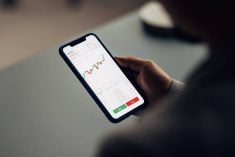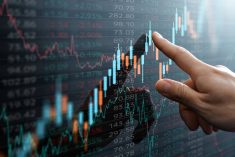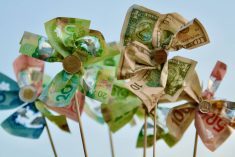With the groundwork for international diversification laid in my previous column, let’s now complete “construction” of a prospective TFSA portfolio begun on March 27. This prospective portfolio would be suitable for an account of $15,000 to $57,500, the current maximum TFSA contribution if you hadn’t made a previous contribution, and you were 18 years of age when the program started in 2009. Please recall our big secret to success is common shares of solid companies, held for a long time. (Disclosure: My wife or I have an interest in all the companies mentioned, but not all in our TFSAs.)
Read Also

Editor’s Rant: Resistance is not futile
A recounting of errors from the September 2025 print editions of Grainews, details of which are painful to the editor.
And now… drum roll please… shown in the table above is a titanium-strong, hurricane-defying, bunker-bomb-surviving prospective TFSA edifice.
If you fell asleep for 10 years and woke up just once a year to reinvest the dividends, but otherwise didn’t touch the portfolio, you will be almost guaranteed to double your money. More likely you will have tripled it (recall the rule of 72).
Portfolio details
This portfolio is 50 per cent Canadian and 50 per cent international, exhibiting much greater international diversification than most Canadian investors’ portfolios. The dividend yield is 4.2 per cent on the Canadian side and a lower 1.9 per cent on the international side. I purposely picked stocks with slightly lower dividend yields on U.S. stocks, as the U.S. government will withhold 15 per cent of the dividends in a TFSA. This makes Berkshire Hathaway (BRK.B) an ideal U.S. company for a TFSA. Warren Buffett’s approach is to assume that his company is better at investing than most people, so his shareholders are better off letting them manage their profits, rather than distribute them. He has the track record to prove he’s right.
In theory, when dividends are not paid to shareholders a company has more money to invest in and grow its business, with profits manifesting as share price appreciation. In practice, that much money jingling around in CEO’s pockets tends to get misspent on overpriced acquisitions or can otherwise be misallocated. One reason I like dividends is because they generally motivate greater corporate fiscal discipline, but I’m not about to argue that point with Warren! I’m actually pretty sure he would agree with me in general, but he’s proven that his company can exhibit superior fiscal discipline.
I put a higher percentage of the portfolio into Royal Bank, as Canadian banks also have an enviable track record of consistent profit growth and as such deserve prominence in any portfolio.
While I mentioned that this would be a great portfolio for up to $57,500, if you are a married couple, you can both contribute for a total of $115,000. I would be very comfortable with these 11 companies for a portfolio of that size. I would also suggest that, rather than rush in all at once, you build the portfolio over time.
There are a few ways you can manage the two accounts. You can have the same portfolio in both accounts, or you can split it up, placing half the stocks in one account and half in the other. Another option that might make management easier, is to put all the Canadian companies in one of the accounts and all the international companies in the other. I think this approach could work well if you look at bottom line results as a combination of both accounts. You will likely experience bigger differences in annual performance, from one portfolio to the other, with this approach. It is best to discuss details of account setup with your financial institution.
Dividend growth
The chart includes a dividend yield and a dividend growth column. There is much more to evaluating a company than the dividend but it provides a good benchmark. I am increasingly watching for dividend growth. This column shows the dividend increase of each company based on what they paid in 2017 vs. 2008. On average, these companies are paying two times the dividend they did 10 years ago. Again, if you fell asleep for the next 10 years there is a very strong likelihood these companies will have once more, on average, doubled their dividend. That makes me pretty happy as a shareholder!
















